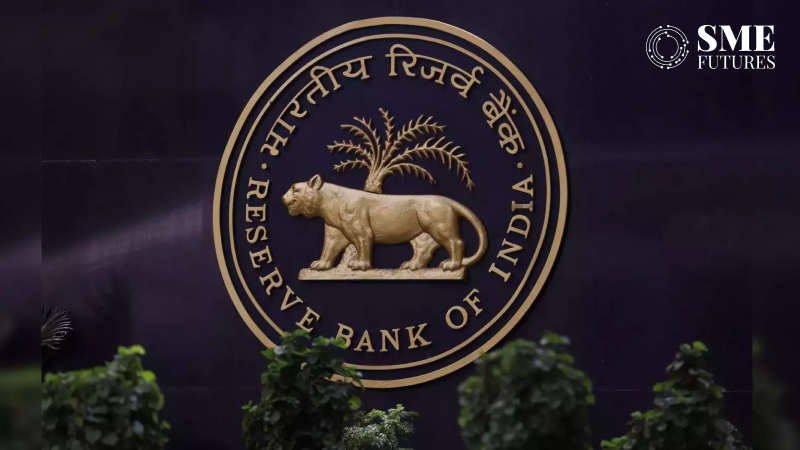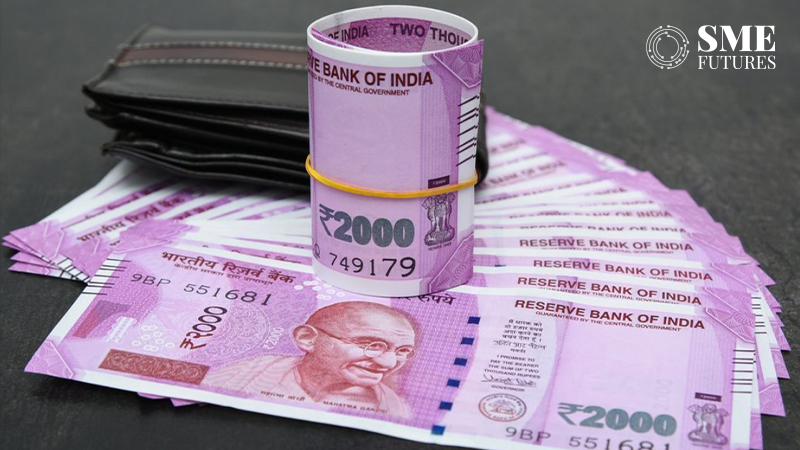Biogas in India—path to a greener and cleaner future?
As India makes significant strides in biogas adoption, we explore the potential and the challenges of this sustainable energy source
Anushruti Singh November 16, 2023

MORE IN Features
Unravelling the Sustainable Tourism Revolution
Smile trends: Cosmetic dentistry business booms in India
Exploring the education landscape: Anticipated trends in 2024
2024 industry trends: MSME sector to remain crucial growth catalyst
Sectoral trends 2024: Indian agriculture sector is seeing a paradigm shift
In the past few months, three things happened in India.
As G20 Chair, India formed a Global Biofuel Alliance. India, the US, and Brazil are its founding members, and 19 other countries are showing support.
The Adani Group and Reliance Industries forayed into the biogas industry.
And On November 2, 2022, the Ministry of New and Renewable Energy (MNRE) extended the National Bioenergy Programme to 2025-26.
These developments collectively demonstrate India’s strategic shift towards greener fuels, even amidst its drive towards electric mobility.
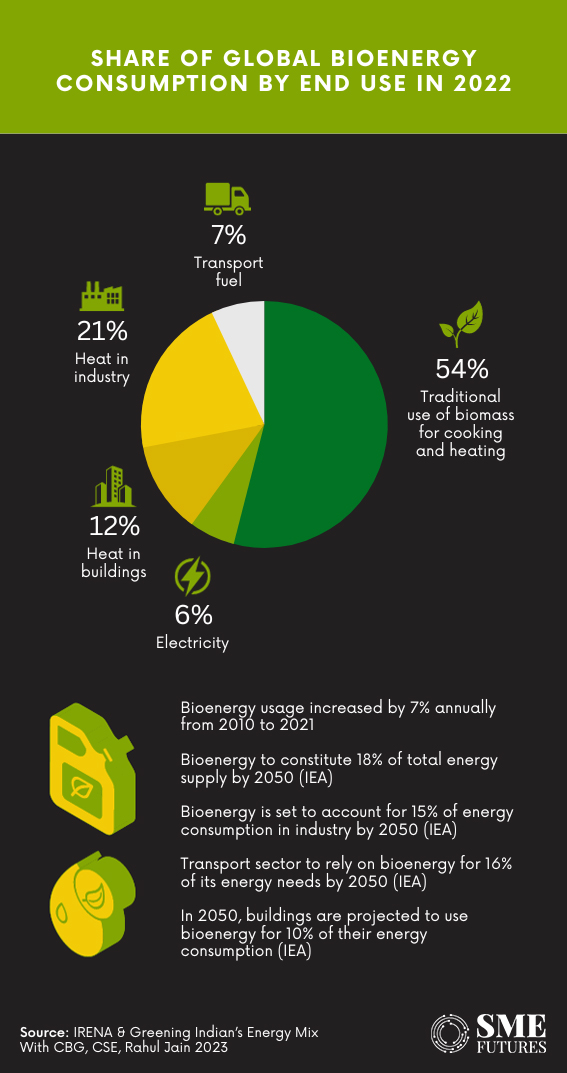
However, biogas’s share in the energy mix is miniscule
India’s target is to increase the share of gas in the energy mix to up to 15 per cent by 2030 to make the country a gas-based economy.
But Compressed Biogas (CBG) is less than one per cent in the energy mix.
We currently import around half of our required natural gas, which can theoretically be completely supplied by biogas. In comparison, electric vehicles would require greater effort in terms of life cycle analysis to ensure that they are also a sustainable option.
Now, the question is that how can biogas be a game changer for India and why has there been so much interest in it lately?
Biogas interest is driven by several reasons
Promoting biogas is one of the most sustainable ways to reduce the reliance on fossil fuels. Then, biogas generation is inextricably linked to effective scientific waste management. The technique minimises methane emissions and helps to clean up the environment. There are also economic benefits, as it reduces the government’s financial load from fossil fuel imports.
Finally, it will make us more Aatmanirbhar.
Gaurav Kedia, Chairman of the Indian Biogas Association, underlines the benefits thus, “India is heavily dependent on oil imports, which makes it vulnerable to energy price shocks and supply disruptions. Biofuels can help India reduce its oil dependence and improve its energy security. Also, biofuels are the cleaner and more sustainable alternative to fossil fuels. The biofuel sector can create jobs and boost the rural economy and help to reduce India’s trade deficit by reducing oil imports.”
It is combating greenhouse gas emissions from landfills, scientifically managing solid waste from agri/industrial activities, producing self-sustaining renewable energy, and promoting organic farming. “CBG can be utilised in the present CNG vehicles, and a lot of push is being given to the gas economy too,” he adds.
Sachin Agarwal, CEO, Shrijee Group also feels biogas has tremendous potential. “It’s a very simple technology, yet it has so many use cases. This gas must be, depending on the use case, treated. It’s that simple!” he enthuses.
CNG automobiles and the fertiliser industry present two of the best use cases for biogas, he tells us.
According to reports, the Indian biogas market is projected to grow from $1.47 billion to $2.25 billion by 2029, indicating a bright future for this renewable energy source.
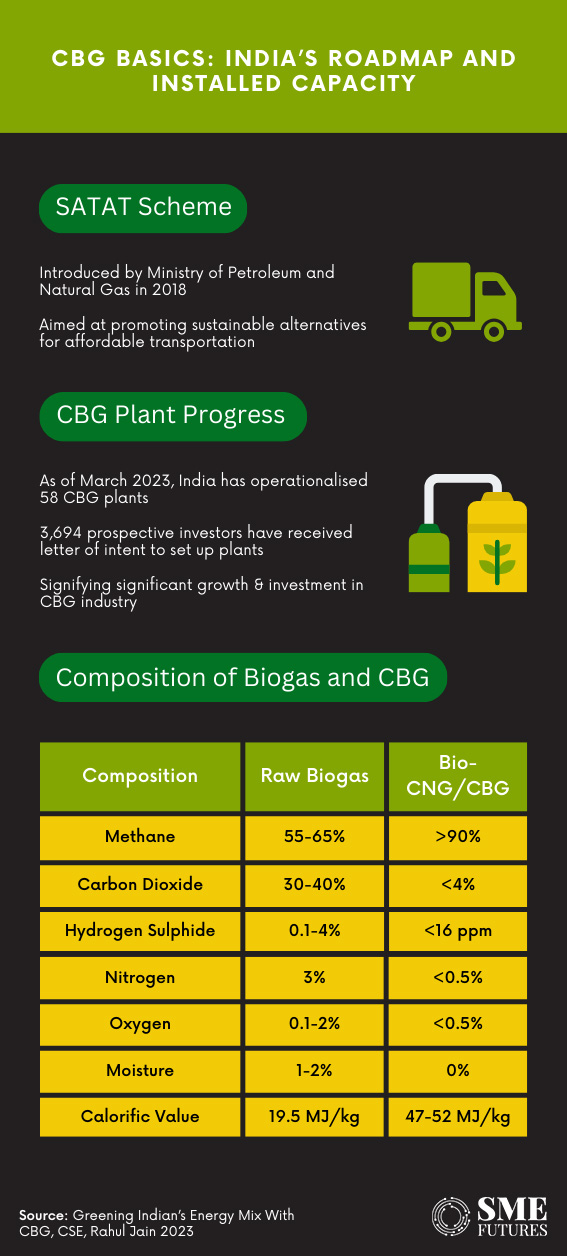
That’s why the government has given it an impetus
Given that biofuels bear various benefits for India, economically, while also meeting energy demand responsibly, the government has launched various measures to promote green fuel.
SATAT is one of them.
According to Kedia the main aim is to cut down the import of crude fuel as it is one of the sectors in which India infuses big money.
“India had envisioned 5000 CBG plants by 2025 through its SATAT scheme and has been constantly endeavouring towards energy self-sustainability and renewable energy. As per industry estimates, India has roughly 62 million metric tonnes of potential organic waste available per annum and a potential to generate 15 million metric tonnes of CBG per year. This can significantly reduce the natural gas imports of India,” he contends.
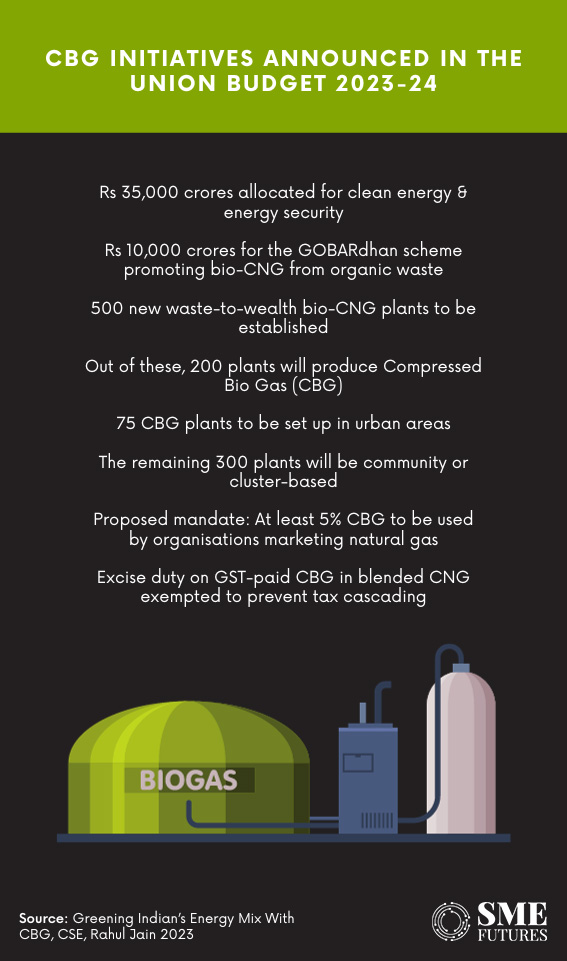
Global Biofuel Alliance to give thrust to sector
India’s steadfast commitment to a cleaner and more sustainable future extends far beyond its national borders. Experts recognise India as a pioneering force in forming the Global Biofuel Alliance (GBA), which will bolster the global biofuel initiative. Additionally, it can generate opportunities worth $500 bn in the next three years for G20 countries.
Kedia underscores the importance of GBA for several reasons, including energy security, climate change mitigation, economic growth, and tech advancement.
He states, “GBA holds the potential to facilitate India’s access to cutting-edge biofuel technologies, positioning the nation as a global leader in the biofuel sector. Moreover, it can serve as a conduit to export these technologies to countries that have yet to embrace biofuels.”
Beyond these overarching benefits, GBA plays a critical role in addressing India’s unique conditions. India is one of the world’s major producers and consumers of biofuels, even though it is increasingly vulnerable to the effects of climate change. GBA provides a framework for India to address these conflicting concerns.
Furthermore, GBA can aid not only India but other nations as well in similar situations in developing a sustainable biofuel supply chain. With its enormous agricultural sector, India is an important source of feedstock for biofuel production.
However, as Kedia notes, India’s biofuel supply chain is still in its developmental stages. “The alliance is poised to play a pivotal role in addressing this challenge by advocating best practices in biofuel production and distribution. GBA offers the potential for the nation to emerge as a major exporter of biofuels. The alliance’s strategic efforts can drive India towards this goal by fostering international trade and cooperation,” he adds.
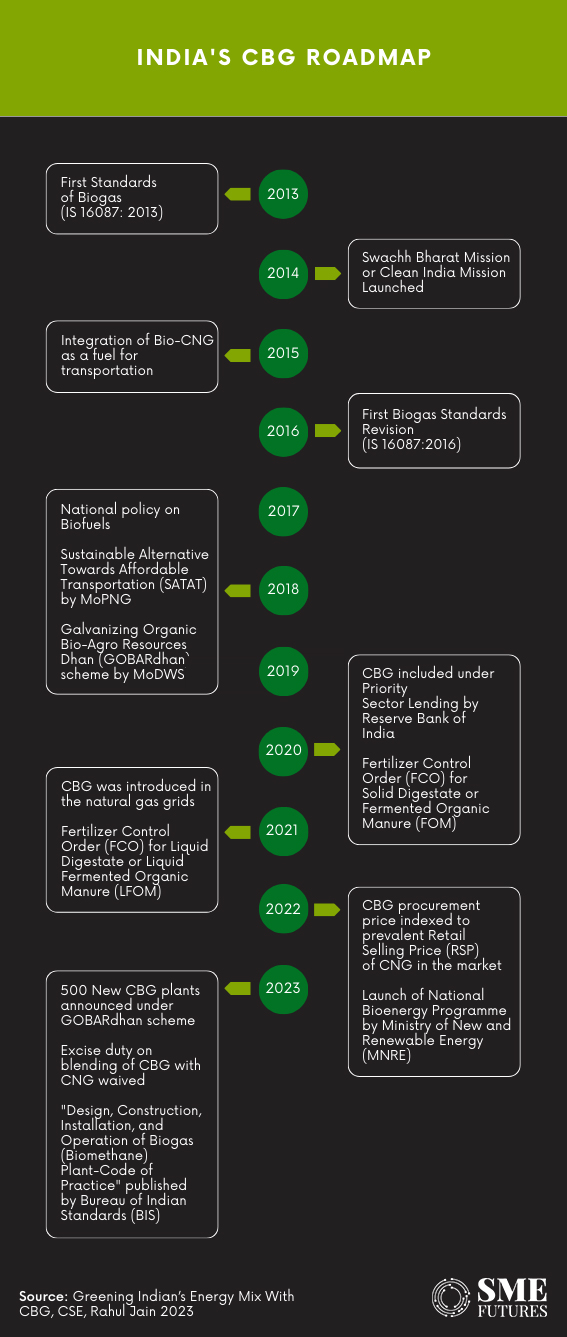
Enter big conglomerates
The biogas business creates numerous opportunities, including the construction of new 3G bioethanol, biodiesel, and CBG plants. Furthermore, novel technologies such as pyrolysis-derived plastic fuels and DME (Dimethyl Ether) are emerging. MSMEs are critical in this environment thanks to their capacity to quickly embrace new technology.
However, despite numerous attractive subsidies and schemes, the biogas sector has not flourished as expected.
The biogas market is largely scattered and rural oriented. So far, there has been a lack of emphasis on large scale, investor-owned plants in India. But with the entry of bigger conglomerates—Adani Total and Reliance Industries, the picture seems to be changing.
“They can provide the sector with significant resource mobilisation, leading to an accelerated realisation rate of projects,” Kedia tells us.
These conglomerates have announced plans to invest heavily in the sector, to the tune of around Rs 5,000 crores in the first phase, and such a capital outlay is going to send a positive signal to the market for onward consolidation, paving the way for MSME players to follow suite.
“With the industry reaching a certain scale, the issues pertaining to the upstream supply chain of raw materials for biogas plants is anticipated to be ironed out. Currently, there is a lack of coordination between the producers of biomass and the operators of biogas plants, which leads to problems such as shortages of feedstock, higher procurement prices, and a foolproof supply chain model is the need of the hour,” he elaborates.
Investment scenario looks lucrative
The sector has also gained attention from independent investors, especially start-ups.
Dr. Somdutta Singh, Founder and CEO of Assiduus Global Inc, LP and an angel investor says, “Investors are increasingly recognising the renewable energy sector’s potential for growth and impact. As an investor, I’m encouraged by this trend and am actively exploring opportunities within the biogas and renewable energy space.”
Her optimism is driven by the emergence of rural start-ups with the goal of sustainable development.
“While I don’t have specific plans yet, I am actively evaluating potential investments in biogas, renewable energy, and related sectors. My focus is on projects that have the potential for both financial returns and a positive environmental and social impact. I am excited about the possibilities of these burgeoning industries,” she adds.
However, we still have a long way to go, and considering the current state of biofuels in India, the government’s goals appear distant. That brings us to the question of why the biogas sector has not been as successful as it should be.
There are challenges
According to Agarwal, most of the issues are unique and are based on the various segments of the biogas sector, and so should be tackled separately. According to him, the three major issues in the sector are-the lack of a qualified workforce, systematic waste segregation, and the demand for a biogas grid in the country.
“There are many benefits, but we can only get them when there is proper infra and awareness among the public. While most biogas plants are in rural areas, I believe that urban areas are also excellent candidates for having a biogas setup,” he asserts.
“Despite campaigns, there remains a long-standing issue with not sorting dry and wet garbage. If it can be addressed at the household level, it will be more cost-effective and time-efficient to convert organic waste into biowaste,” he adds.
“Also, we need a skilled and experienced workforce which understands the intricacies of the biofuel sector,” he continues.
“Finally, just like we have LPG gas pipelines, we need a national biogas grid. Right now, it’s very expensive to transport biogas from where it is generated to the petrol pumps. We need a national grid infrastructure to inject gas to the end points. This will drastically cut down transportation costs,” he suggests.
Offtake of power, gas and fertiliser
The success of India’s solar PV business can be credited to significant public-sector companies such as the NTPC stepping forward to purchase power.
However, this is not the case in the biogas industry, and assured offtake is a concern.
Despite the establishment of a waste-to-energy programme, such as the Programme on Energy from Urban, Industrial, and Agricultural Waste/Residues, there is a systemic lack of offtake at the national level.
“Instead of currently ruling ‘as required’ quantity, Oil Marketing Companies (OMCs) should guarantee assured offtake of 100 per cent of CBG produced. This will boost the morale of the current and future players and allow for more growth,” says Kedia.
“Also, governmental initiative is required for the current fertiliser producing enterprises to participate in the sale of organic manure. There is an MDA of 1.5 Rs. per kg, however an umbrella policy is required to boost the sector,” he adds.
This offtake will ensure effective management of the massive amounts of slurry created, which is a significant concern.
Feedstock supply security is another challenge
Price volatility and feedstock availability are two of the key reasons behind why developers are hesitant to invest in biogas facilities in India. In the past, the price of the input feedstock has increased several times over when feedstock providers have recognised the value of this newly discovered by-product.
One of the most essential de-risking measures that must be done is to secure the feedstock and ensure that the input price fluctuation does not negatively impact the investment.
“To ensure availability of feedstock, a maximum selling price for feedstock like MSW, paddy straw, cow dung and press mud might need to be fixed to prevent demand-based price hikes which could otherwise cause plants to be financially nonviable,” Kedia points out.
Finally, despite the challenges, the growing interest from conglomerates, the government’s commitment, and the entry of investors into this sector, signal a bright future for biogas as a cleaner and more sustainable energy source.


